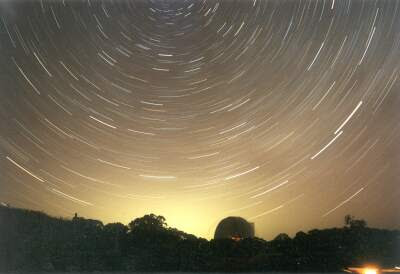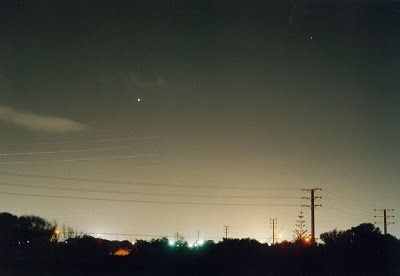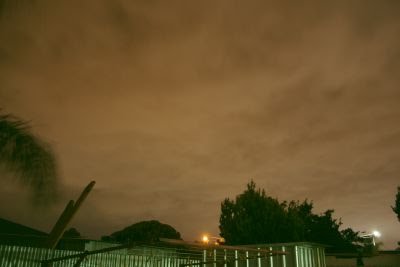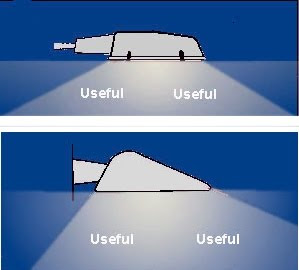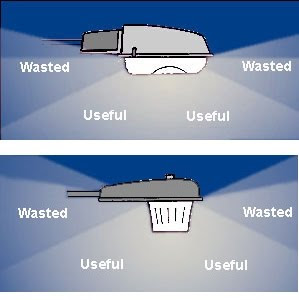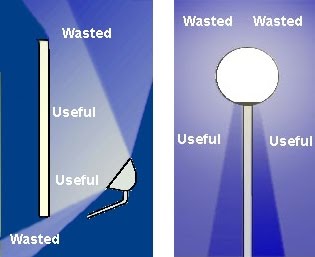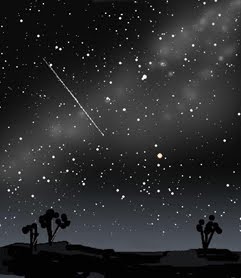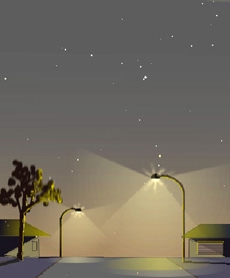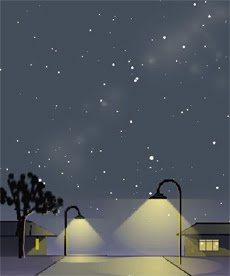Dark Sky South Australia
The Science Astronomy Links Contact
Wasted
Light - Wasted
Energy - Wasted Money - Environmental Degradation
and how to fix it
Update October 2016
Energy - Wasted Money - Environmental Degradation
and how to fix it
Update October 2016
Adelaide's light
pollution is typical of urban environments
everywhere. The following most likely applies to
your town and city too.
While
many town planners are beginning to take
notice there is still a long way to go. Far too many outdoor
light
fixtures used for business, advertising and security
are still being installed without due
consideration to the choice of the correct fixture
for the task. The result is unnecessary skyglow, glare
and light
trespass. Mostly it is due to
a preference for cheap, inefficient light
fixtures, bad aiming, over-lighting and a lack of
awareness of better lighting options.
Growing light pollution over
Adelaide encroaches on the stars seen from 120 km
north of the city. While some of this light is unavoidably reflected upward from road and other surfaces the remainder is wastefully emitted directly upward from tens of thousands of poorly shielded street lights and similarly badly aimed and unshielded advertising and security lights. This wasted light costs millions of dollars of electricity annually and injects more than 70 thousand tonnes of carbon dioxide and other toxins into the atmosphere from burning fossil fuels to generate this wasted electricity. Smart lighting practices can be adopted to save power and the environment while creating a better and safer night time lighting — and also help preserve the night sky. Star-trail image courtesy Justin Tillbrook
north of the city. While some of this light is unavoidably reflected upward from road and other surfaces the remainder is wastefully emitted directly upward from tens of thousands of poorly shielded street lights and similarly badly aimed and unshielded advertising and security lights. This wasted light costs millions of dollars of electricity annually and injects more than 70 thousand tonnes of carbon dioxide and other toxins into the atmosphere from burning fossil fuels to generate this wasted electricity. Smart lighting practices can be adopted to save power and the environment while creating a better and safer night time lighting — and also help preserve the night sky. Star-trail image courtesy Justin Tillbrook
Within
the city up-light from thousands of unshielded
light fixtures scatter upwards creating a
pervasive sky glow obliterating all but the
brightest stars. If all this wasted up-light were
directed downward - where it is useful - only 6%
of it would return upward due to reflections from
road and other surfaces. Not only would this bring
back many of the stars but improve lighting
quality on the ground by reducing glare and even
save on energy and money. The lone object in the
washed out sky in this image is Mars. Taken from
the coast at Semaphore South looking east toward
the greater metropolitan area.
A typical view
from an Adelaide backyard on an overcast
night. Vast quantities of wasted uplight
illuminates the cloud base creating a gloomy
pall over he city. Residents pay for this
wasted light through council and electricity
rates.
Which kind of lights are good and which are bad?
THE
GOOD, THE BAD, THE UGLY
THE GOOD
Fully
shielded fixtures direct light below the
horizontal toward the ground.
Top:is one of the standard aero-luminaires fitted with a flat protector that prevents light from scattering sideways and upward. This avoids glare and improves the quality of lighting. These fixtures are known as full-cutoff in that they cut off light from escaping sideways and upward. Fitted with a LPS or HPS (low-pressure or high pressure sodium) lamp they are efficient and make a good choice for many kinds of outdoor lighting especially roadways. Examples can be seen in some metropolitan council areas especially in parts of Adelaide CBD where they are replacing older glarey fixtures. Bottom: shows the preferred flood-light fixture for areas such as car yards and parking lots. Often fitted with
a less efficient mercury or metal-halide (white) lamp, the design however avoids glare and light trespass without compromising security.
Top:is one of the standard aero-luminaires fitted with a flat protector that prevents light from scattering sideways and upward. This avoids glare and improves the quality of lighting. These fixtures are known as full-cutoff in that they cut off light from escaping sideways and upward. Fitted with a LPS or HPS (low-pressure or high pressure sodium) lamp they are efficient and make a good choice for many kinds of outdoor lighting especially roadways. Examples can be seen in some metropolitan council areas especially in parts of Adelaide CBD where they are replacing older glarey fixtures. Bottom: shows the preferred flood-light fixture for areas such as car yards and parking lots. Often fitted with
a less efficient mercury or metal-halide (white) lamp, the design however avoids glare and light trespass without compromising security.
THE BAD
Top: These
"cobra-head" fixtures are fitted with a
dome or cylindrical shaped lens that
emit a substantial portion of their light uselessly sideways and upward creating glare, light trespass and sky glow. These fixture are known as semi-cutoff. They are currently the standard on the state's arterial roads and many residential roads. They can easily be refitted with a flat lens as some Councils have done to existing fixtures.
Bottom: The "flower-pot" mercury vapour lamps are a very bad choice. They are pervasive in residential streets throughout the metropolitan area and are especially glarey, inefficient and costly to run (they have been outlawed in other countries). A far better choice would a full-cutoff fitted with a sodium lamp or metal halide lamp.
emit a substantial portion of their light uselessly sideways and upward creating glare, light trespass and sky glow. These fixture are known as semi-cutoff. They are currently the standard on the state's arterial roads and many residential roads. They can easily be refitted with a flat lens as some Councils have done to existing fixtures.
Bottom: The "flower-pot" mercury vapour lamps are a very bad choice. They are pervasive in residential streets throughout the metropolitan area and are especially glarey, inefficient and costly to run (they have been outlawed in other countries). A far better choice would a full-cutoff fitted with a sodium lamp or metal halide lamp.
THE
UGLY!
Intended to highlight
advertising or "enhance" architecture,
these light fixtures indiscriminately
spray light everywhere.
Left: Billboard and business lighting, or lighting that is supposed to illuminate significant architecture, are often placed so that a substantial portion of the light completely misses its target and adds to the waste light and sky glow. Billboards should be illuminated from overhead light fixtures and buildings should be illuminated by carefully designed and aimed "spotlights". Both should be subject to curfews in late hours. Right: Globe lights may look good in the daytime, but are very wasteful at night because most of their light goes sideways and up into the sky! They should never be used for street lighting. Efficient, alternative designs are available where aesthetic lighting is required.
Left: Billboard and business lighting, or lighting that is supposed to illuminate significant architecture, are often placed so that a substantial portion of the light completely misses its target and adds to the waste light and sky glow. Billboards should be illuminated from overhead light fixtures and buildings should be illuminated by carefully designed and aimed "spotlights". Both should be subject to curfews in late hours. Right: Globe lights may look good in the daytime, but are very wasteful at night because most of their light goes sideways and up into the sky! They should never be used for street lighting. Efficient, alternative designs are available where aesthetic lighting is required.
Good lighting practice
not only gives
us better quality
night-time
illumination and saves
energy but
brings back
the stars!
An inspirational dark sky in a
deep rural setting far from any
artificial lights. View looking west
with the constellation Scorpius
setting.
The Milky Way is easily
visible with thousands of
faint stars.
|
|
Same
view in a light polluted urban
setting with unnecessary sky
glow and glare from poorly
designed and unshielded lamps.
Light is emitted side ways and
upwards creating sky-glow that
diminishes all but the
brightest stars and planets.
Glare from these lights often
encroach on properties forcing
some residences to shutter
their windows. Glare creates
excessive contrast
compromising the eye's ability
to adjust to between
illuminated areas and shadows.
|
|
| Full-cutoff fixtures direct light below the horizontal (down-light) providing quality illumination with reduced sky glow, less glare and returning some fainter stars to the sky. Residents are less likely to suffer light trespass. Light is more efficiently utilized creating a better and safe nighttime environment. |
Next - Lighting Practices in Adelaide
All images and illustrations by Martin Lewicki unless stated otherwise.
|
Contact:
Martin Lewicki: m artin .le
wicki (at) u ni s a (dot) e d u
(dot) a u (close up spaces) |
